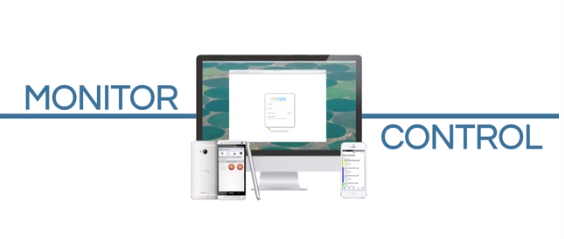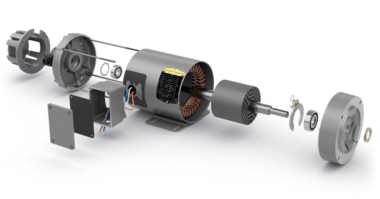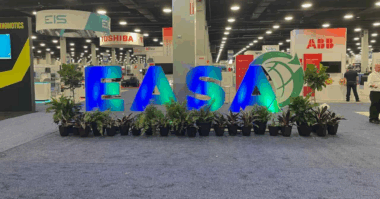A farmer’s to do list is never done, which is why the agriculture industry takes full advantage of technological advancements that can save them energy and time. With more than 800,000 irrigation pumps in operation today, many farmers spend up to one third of their days simply traveling to and from these pumps and wells to ensure everything is working properly. This can be very inconvenient, especially for farmers with pumps and wells that are not easily accessible or are located many miles apart. But with Internet of Things (IoT) platform advancements, farmers can monitor and control pump systems from their smart phone or tablet, thereby dwindling down on wasted time and effort.
According to research from Gartner, Inc., the number of Internet-connected physical devices will reach 26 billion by 2020, up from 900 million in 2009. But the agriculture industry has to undergo changes before these devices become commonplace. There are three key steps that need to occur before remote monitoring within industrial pumps and controls becomes democratized, and the truth is it might take some time.
Step 1: Construct a remote terminal unit (RTU) that doesn’t require interfacing with existing circuitry.
Unlike many successful remote monitoring technologies in other industries—like security and public transportation—pumps and their control panels currently require interfacing with existing high voltage circuitry. This can create a significant barrier as it means a properly skilled electrician will have to install it, which limits rapid adoption. In order to truly make remote monitoring commonplace, RTUs must not be required to directly interface with existing high voltage control circuits. Low voltage sensors must be developed that can analogously deduce pump status while being resistant to induced voltage common to 480VAC environments.
Step 2: Lower the cost of systems and increase their value proposition.
While cheaper than other options, such as full blown SCADA implementations, remote monitoring systems based on modernized IoT platforms are currently too expensive to become democratized. Larger farms with many irrigation pumps can often afford to implement these systems, as their operational costs will significantly decrease thereby generating a quick ROI. On the other hand, farmers with only one or a couple pumps might not recognize the value proposition of a remote monitoring system as quickly. Prices need to fall to a net present value of $500 per site—about a third of what they currently cost—to facilitate widespread adoption.
Additionally, dependable wireless coverage in rural areas is directly proportional to recognized value. While rural cellular coverage has dramatically improved in the last three years, many heavily irrigated areas of the country still suffer unreliable service levels. ROI will suffer unless a farmer has complete confidence that the remote monitoring technology is working at all times, and the underlying infrastructure is stable.
In order to appeal to those looking to maximize ROI on these products, manufacturers should also continue to incorporate new functions into their RTUs, like the ability to detect tampering and theft. Just like with any technology, the value will increase as more features are added.
Step 3: Develop cloud-based software with application programming interfaces (APIs).
In order for remote monitoring within pumps and controls to reach its full potential, the majority of the software logic governing pump control should be cloud-based. Cloud-based software will maximize integration potential; data won’t just be shared with the farmer, but also between other pumps and third parties. The software should have a rich, internet standards based, application programming interface (API). An API is a set of guidelines that makes it easier for third parties to develop and integrate programs on a platform. For example, Windows and iOS have many APIs that allow third party programs to properly interface with the operating system, as well as other third party programs. These APIs will allow third parties to consume data from pumps and integrate other systematic services.
Here’s are some examples of how it could work. A weather application could send farmers a notification when it’s raining and provide automatic pump shut-off services, potentially preventing hours of wasted pumping. Similar to devices that let insurers monitor safe drivers, insurance companies could track whether farmers are irrigating at optimal times, rewarding those that irrigate responsibly and raising rates for those who don’t. Research organizations could also collect data from all over the world to analyze and publish efficiency trends. All of these third parties would be paying for this data, further driving down the price of systems.
There is clearly a long way to go until all three of these steps are reached. Currently there are not enough third parties involved, and those that are involved aren’t collaborating enough. Startup players need to be laser-focused on individual pieces of the puzzle rather than attempting to conquer the entire infrastructure and system. Once hardware costs decrease, and the number of RTUs proliferate, a networking effect will ultimately occur, and people will see the value in the data that remote monitoring systems provide. And when that happens, the democratization of remote monitoring within pumps and controls will be upon us, offering gains to the famer, water conservation districts, power companies and more.
About the Author:
 Eddie DeSalle is the CEO and founder of Net Irrigate, a manufacturer of wireless irrigation monitoring technology for the agriculture industry. The company’s hardware and software solutions are designed to notify irrigators of costly events, and its products include WireRat®, PivotProxy® and PumpProxy®. DeSalle is an alumnus of the Kelley School of Business at Indiana University where he received his MBA with a focus in new product marketing and management. He may be reached at edesalle@netirrigate.com or 800-961-9549, ext. 55. Net Irrigate is located at 2356 W Industrial Park Dr., Suite B, Bloomington, IN 47404. For more info, visit www.netirrigate.com.
Eddie DeSalle is the CEO and founder of Net Irrigate, a manufacturer of wireless irrigation monitoring technology for the agriculture industry. The company’s hardware and software solutions are designed to notify irrigators of costly events, and its products include WireRat®, PivotProxy® and PumpProxy®. DeSalle is an alumnus of the Kelley School of Business at Indiana University where he received his MBA with a focus in new product marketing and management. He may be reached at edesalle@netirrigate.com or 800-961-9549, ext. 55. Net Irrigate is located at 2356 W Industrial Park Dr., Suite B, Bloomington, IN 47404. For more info, visit www.netirrigate.com.




